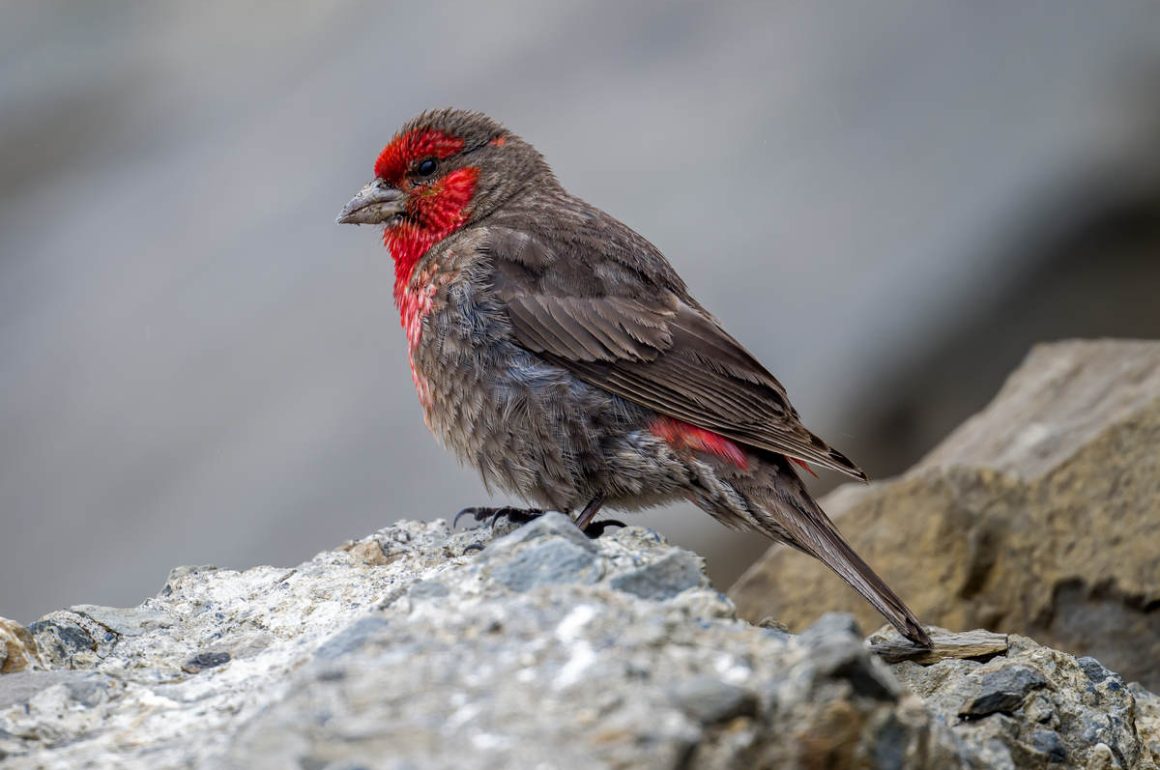
In June 2023, I again went to Balangshan, a mountain about 3 hour’s drive from Sichuan’s capital Chengdu – and again with Alpinebirding, fortunately no longer for them to partly deal with confusing covid restrictions but only to help me find birds that I am too incompetent a birder to find on my own.
The broader Balangshan area has three different parts – the low elevation of nearby Wolongshan, the higher part of the road across the mountain that is referred to as the tunnel area among birders, and the actual Balangshan pass, which reaches an altitude of 4500 meters or so. And that is the area this post, the first in a series of three, covers.
One warning: If you ever plan to go to Balangshan, make sure to check with me first – I recommend avoiding the place whenever I am there, as that almost invariably means heavy fog alternating with rain. Or as this time (remember, in June) snow. I am mildly surprised and grateful that given this situation, Alpinebirding still accepts me as a client.
The weather conditions meant that occasionally, the Alpine Accentors had to concentrate their foraging efforts on the few parts not covered in the white stuff.
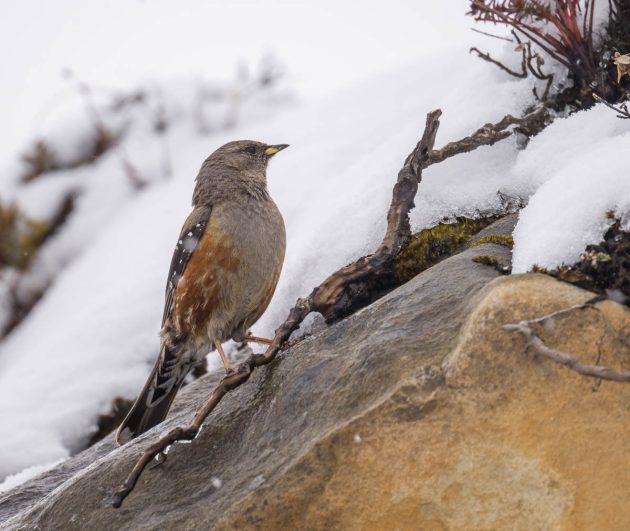
Similar to the singing of Taylor Swift, the singing of female Alpine Accentors attracts males, as described here. Though in reality, I guess most Taylor Swift fans are female, but that does not really fit into my storyline.
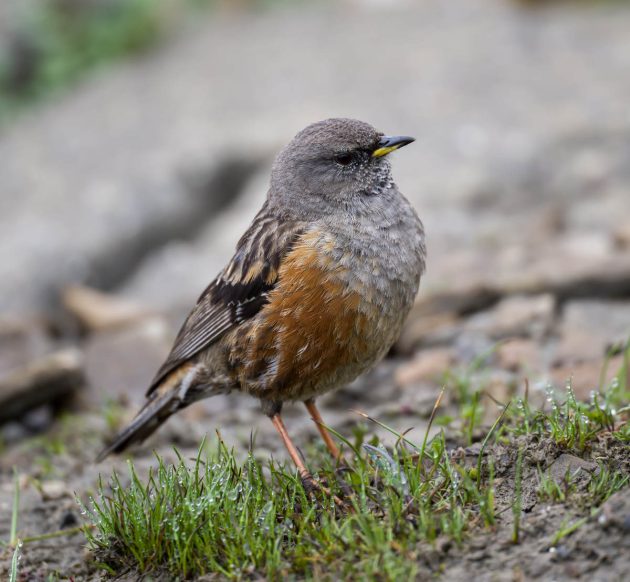
If the analogy holds, one should assume that Taylor Swift’s more recent songs are more complex than earlier ones, as the paper states that “older females, which laid larger clutches, sang more complex songs”.
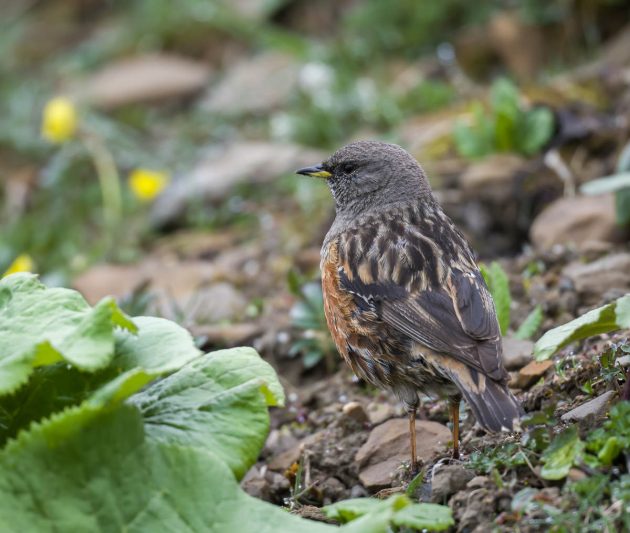
Apparently, Alpine Accentors breed in polygynandrous (multi-male and multi-female mating) groups: an alpha male and 1-3 unrelated subordinate males share a large range that overlaps with that of 2-4 unrelated females.
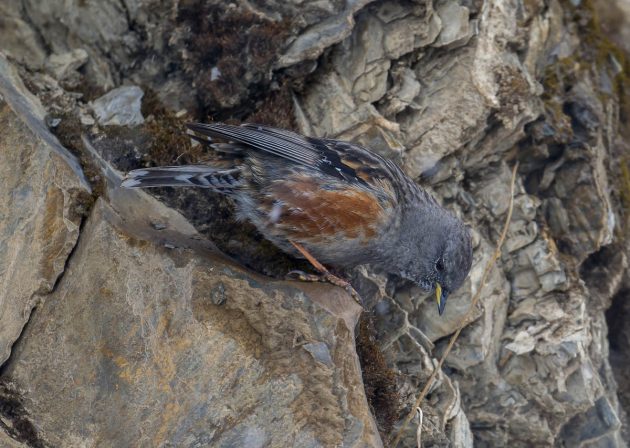
The best female strategy seems to be to mate with as many of the males as possible, as this means more help in feeding the chicks by all the potential fathers (I guess the fathers do not have easy access to paternity tests).
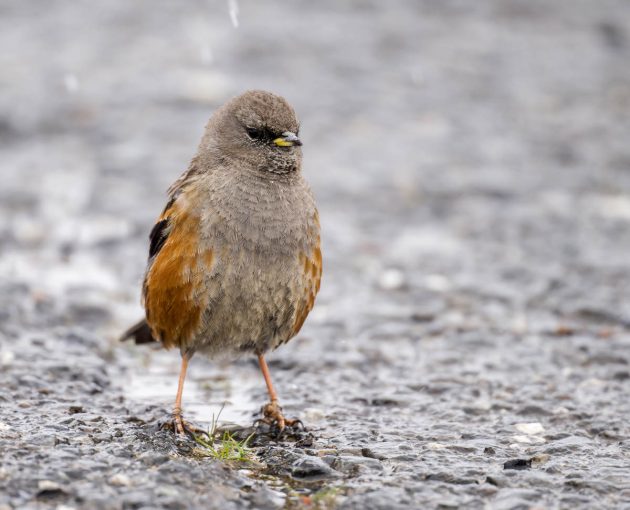
Higher-ranking females seem to do this better than lower-ranking ones, resulting in higher survival rates for their chicks (source).
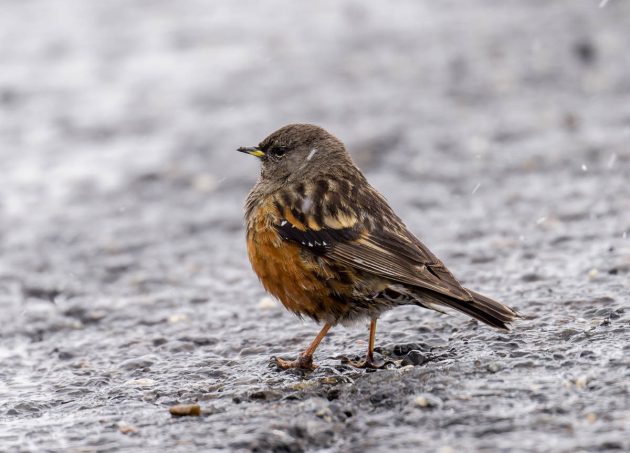
The Tibetan Snowcock at first glance looks a bit like Obelix to me – I guess it is the stripes.
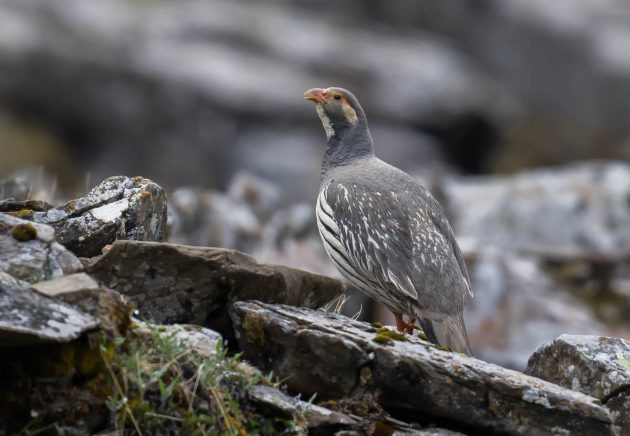
Being lazy, a bunch of researchers used camera traps to investigate the species rather than following the birds directly (which would have had some health benefits).
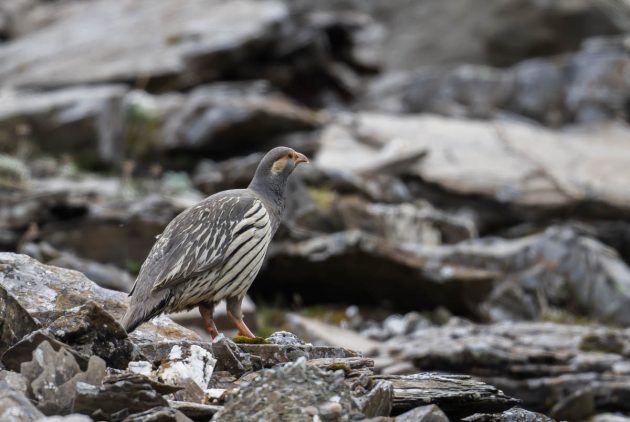
They found that the species is diurnal (well, using cameras, would they even have seen nightly activities?), with peak activity between 8 and 10 am (when office workers go through their email inbox) and 6 and 8 pm (when office workers have their first beer).
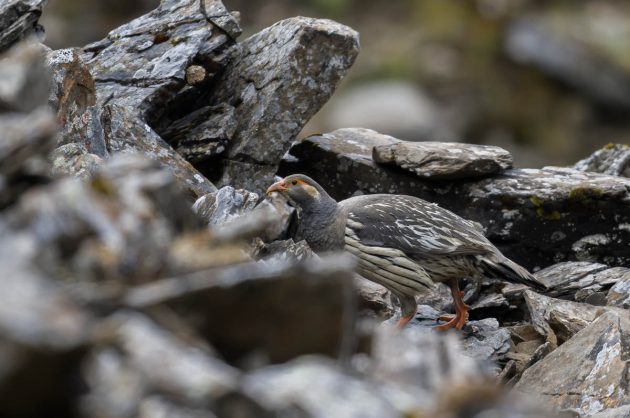
And they found that Tibetan Snowcocks like high elevations, gentle slopes, and low levels of vegetation. With regard to their music taste, the research results were inconclusive.
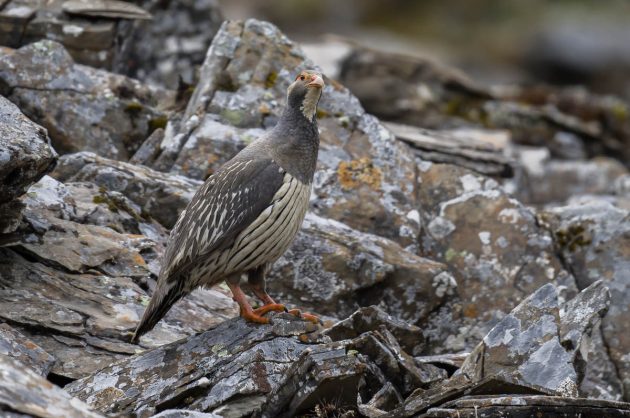
Red and yellow are the colors symbolizing several different things – for example, McDonald’s, the People’s Republic of China, Mastercard, and Kodac. Separately, they are also the colors allowing differentiation between the Red-billed Chough and the Yellow-billed Chough.
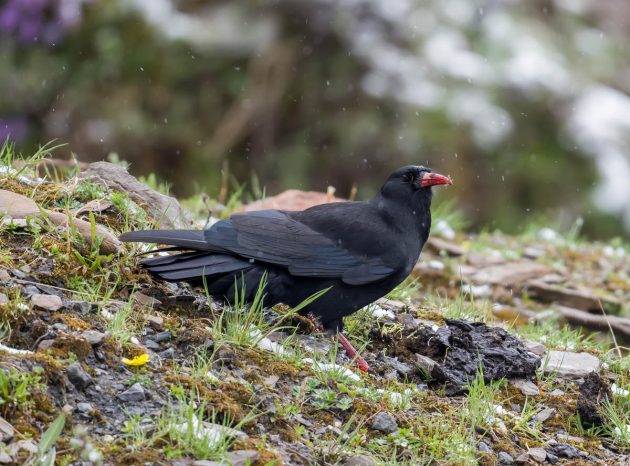
Being a management consultant, I am well-versed in the science and art of bullshitting. Still, I am somewhat impressed by a paper titled “Integrating advances in population and evolutionary ecology with conservation strategy through long-term studies of red-billed choughs”. It has all the buzzwords one could wish for – “integrated”, “ecology”, “conservation”, “long-term”.
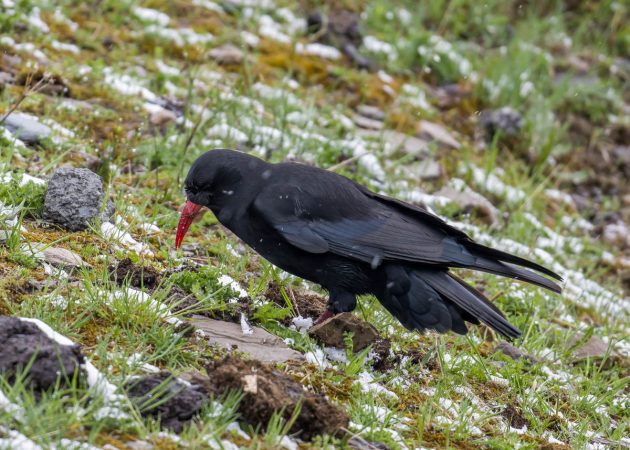
And it is not just the title. In the abstract, the authors state that they “proactively aimed to achieve the dual and interacting objectives of advancing population and evolutionary ecology and advancing effective conservation”. I was kind of afraid they forgot to use the word “proactive”, but no, I needn’t have worried.
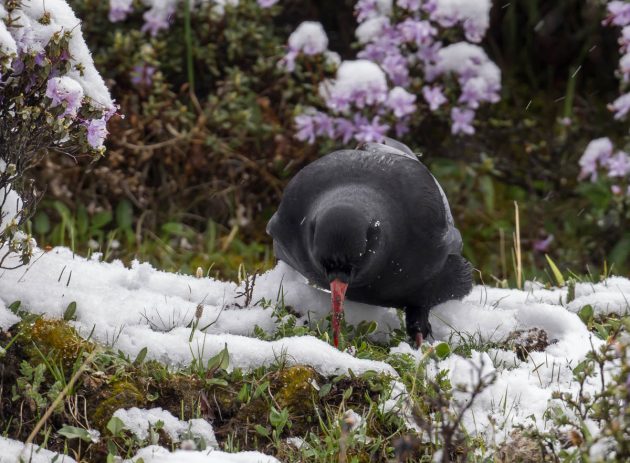
And the last part of the abstract is another clear winner: “This case study demonstrates a full iteration through the sequence of primary science, evidence-based intervention, quantitative evaluation, and feedback that is advocated in conservation science but still infrequently achieved. It thereby illustrates how pure science advances informed conservation actions to ensure the (short-term) stability of the target population, and how conservation-motivated analyses fed back to advance fundamental understanding of population processes.”
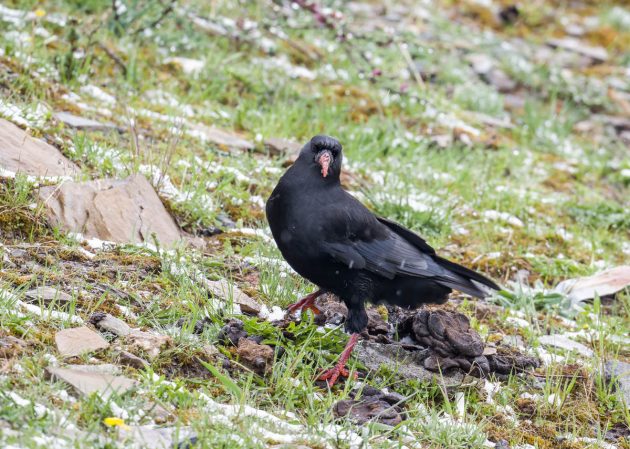
Full iteration! Evidence-based! Feedback! Fundamental understanding!
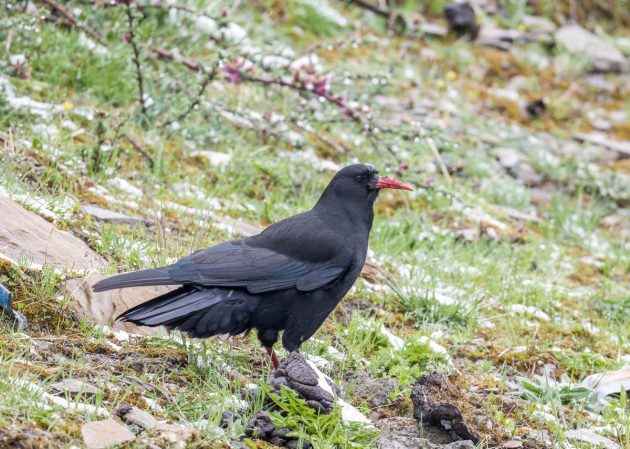
In a 1997 paper, Spanish researchers describe feather mites on Red-billed Choughs that seem to actually have a positive effect on the birds, or at least not a negative one.
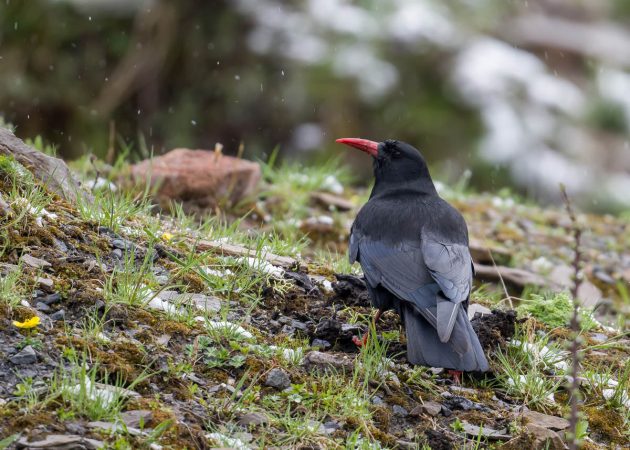
But I only looked at the abstract very quickly, as I missed any exciting buzzwords.
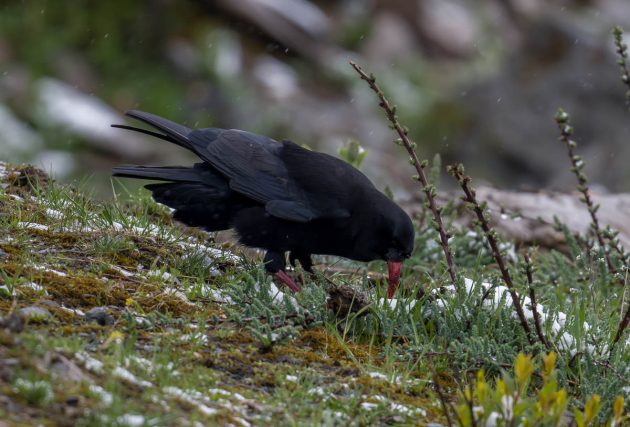
A third paper at least used the term “Age-Specific Reproductive Performance”. Among other things, it finds that female Red-billed Choughs with lots of chicks die younger while those with fewer chicks when young frequently live longer. Mothers with several young kids will find these findings very convincing.
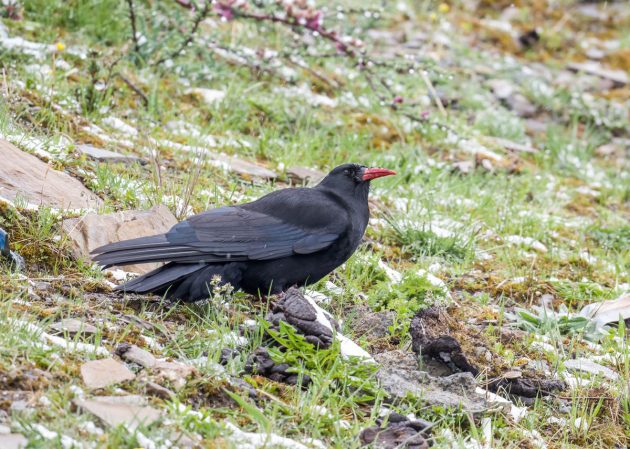
The HBW seems to be a bit uncertain about the proper name of Pyrrhocorax Graculus – is it Yellow-billed Chough or Alpine Chough? To be safe, both names are used on the same website.
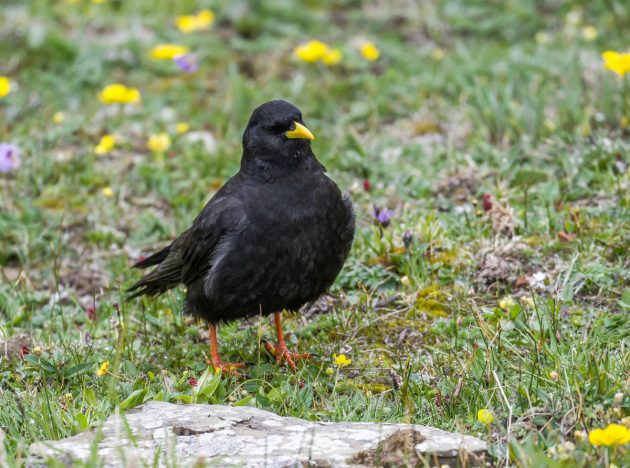
At least the second name hints at the higher elevation status of the Yellow-billed Chough. The HBW notes somewhat disparagingly that the bird “is very much a scavenger about human habitation, especially so about ski resorts in Europe”. This sounds true – I have seen the bird feeding on discarded human food right at the Balangshan pass (though there are no skiers there, just Chinese tourists, some of whom quite surprised by the cold at 4500 meters, having turned up in shorts and T-Shirt. So they turn to buying fatty food from the vendors at the pass hoping to develop an insulating layer of fat, then realize the food is rather bad, throw part of the food away, which then ends up being eaten by the choughs).
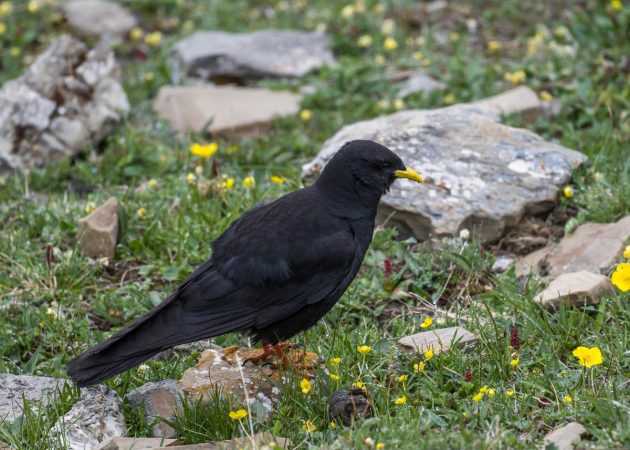
If such human food is not available, the Yellow-billed Chough goes back to its original diet of (at least in Europe) grasshoppers, as described here.
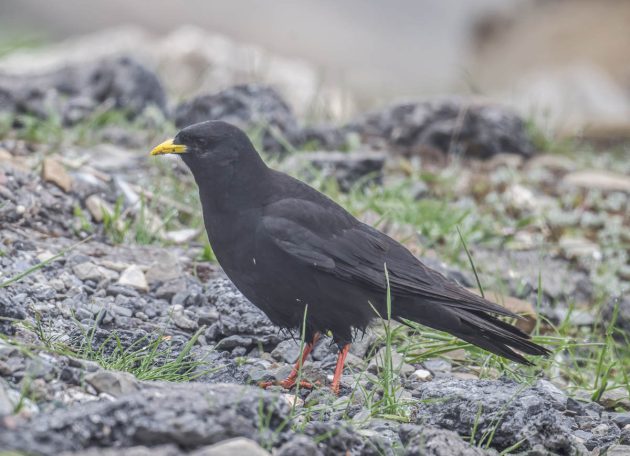
The calls of the Giant Laughingthrush are quite common both somewhat below the Balangshan peak area and at the tunnel area that will be described in a future post. The HBW seems to be a fan, describing the vocalization as “loud, clear, sweet, quite rich and melodious”.
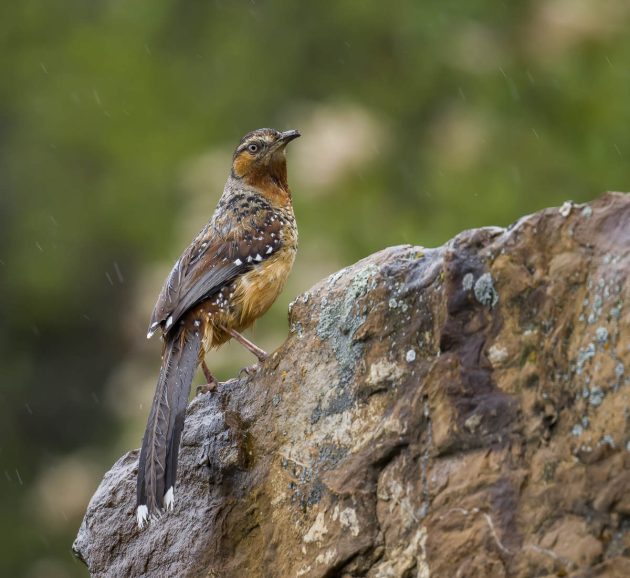
Me, I still prefer The National, despite the slightly disappointing latest album.
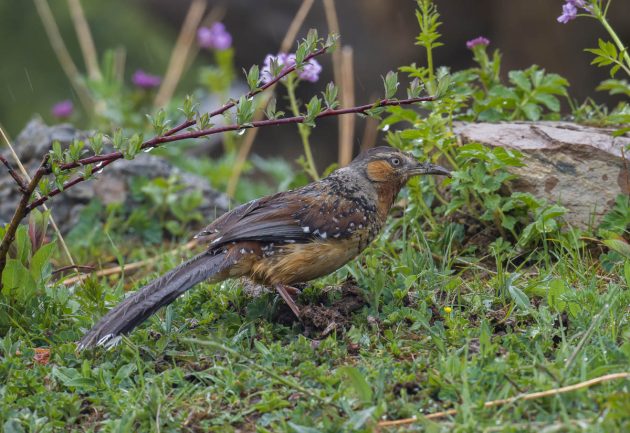
This species might indeed merit a bit more research – the only paper I found on its breeding looked at only 7 nests (of which 3 failed).
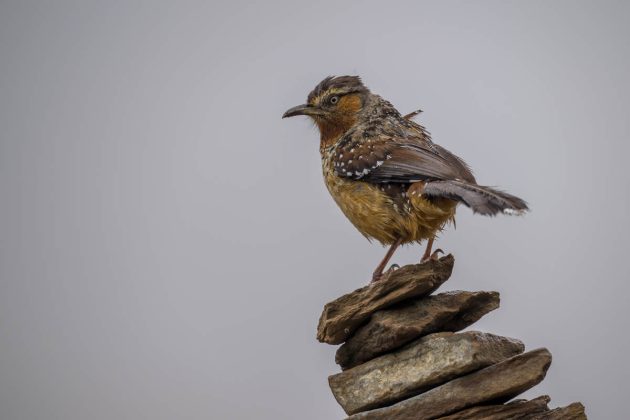
It seems the species (like me) is not very fond of their offspring – the study found that nest attentiveness during the day decreased from 93% before hatching to 59% during days 3–7 of the nestling period, i.e., when the chicks started to babble and call for attention. Or maybe there was just more need to collect food, but I like the first explanation better.
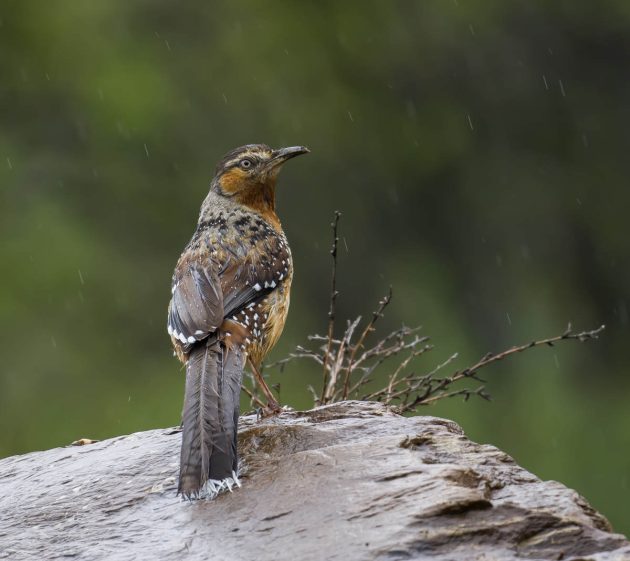
There is a cottage industry of publishing papers on DNA sequences of bird species similar to this one on the Blue-fronted Redstart: “The complete mitochondrial genome of Phoenicurus frontalis (Passeriformes: Muscicapidae)”. I guess that with about 10,500 bird species, this leaves some work for future generations of ornithologists, though I cannot say I find this very exciting. Also, I find it kind of strange that such a rather generic paper has 6 listed authors, but maybe that includes the guy who bought coffee and sandwiches for the people actually working on the paper.
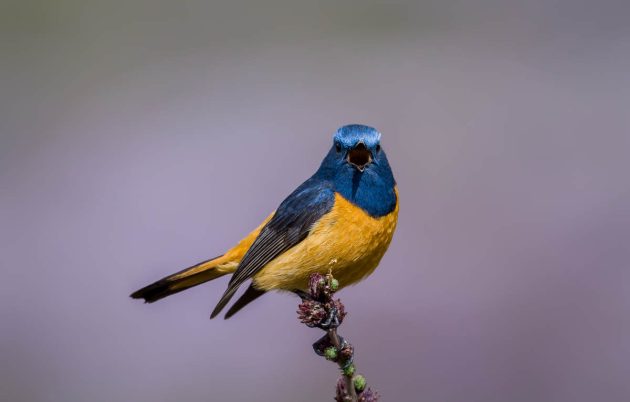
But what if the alternative – searching for papers on the Blue-fronted Redstart – is “Comparative analysis of the intestinal tract microbiota and feeding habits of five sympatric flycatchers”?
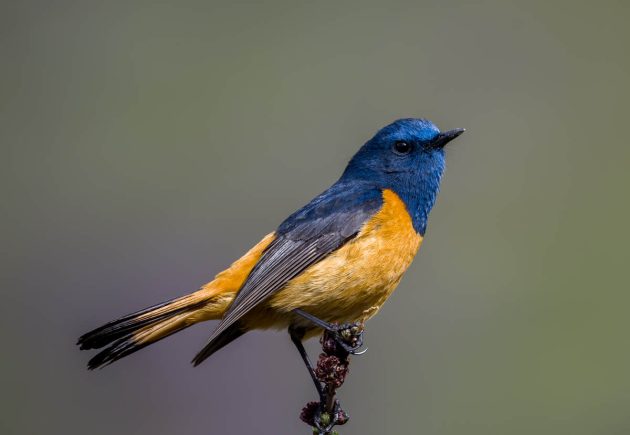
The paper at least contains the information that the diet for Blue-fronted Redstarts is a mixture of insects (>70%) and plant fruits (<30%) – and of course, compared to the other redstarts are not that interested in fruit, this also has an impact on the gut microbes. Still, not a piece of information I would want to share at a dinner table unless on a birding tour with very nerdy fellow travelers.
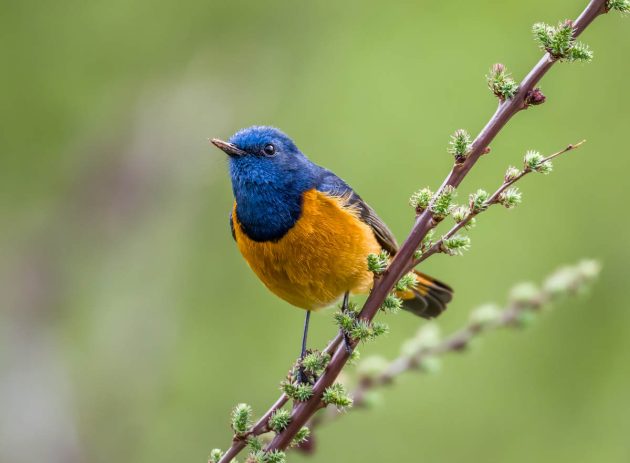
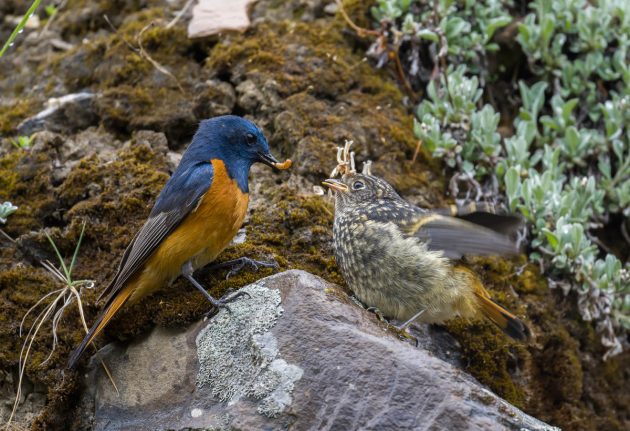
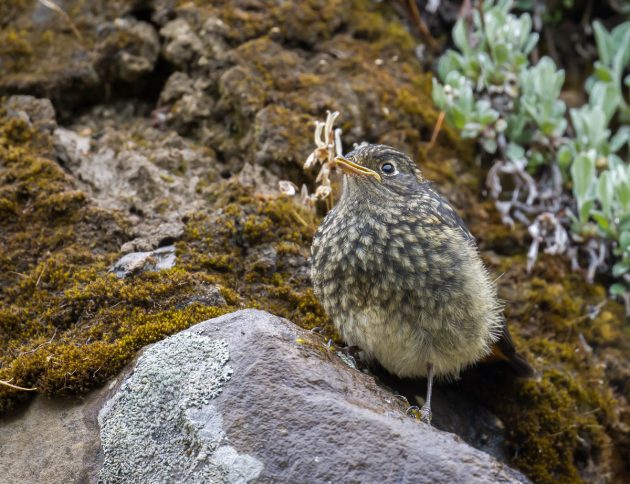
The Rosy Pipit seems a bit oversold to me as it takes a lot of goodwill to see the rosiness of the species. Being wet seems to help, though.
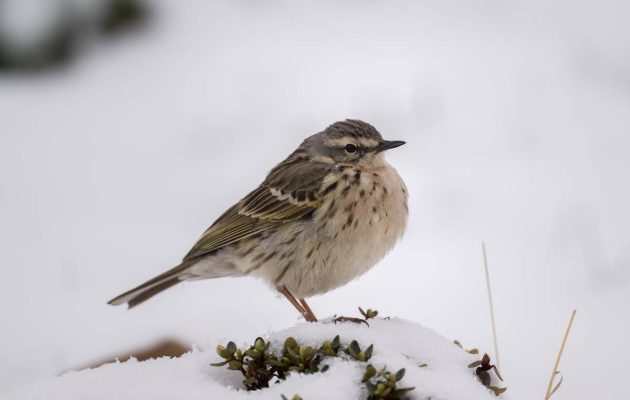
BirdingAsia has a report on the first Rosy Pipit seen in Mongolia. Frankly, I find such reports relatively meaningless, but I guess they give a sense of purpose to the listers of this world.
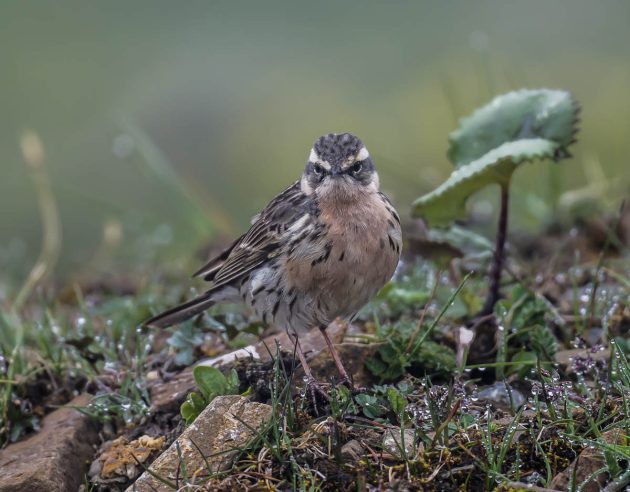
According to the HBW, the Red-fronted Rosefinch is the highest-breeding passerine in China, living at an altitude of about 3300-5700 meters
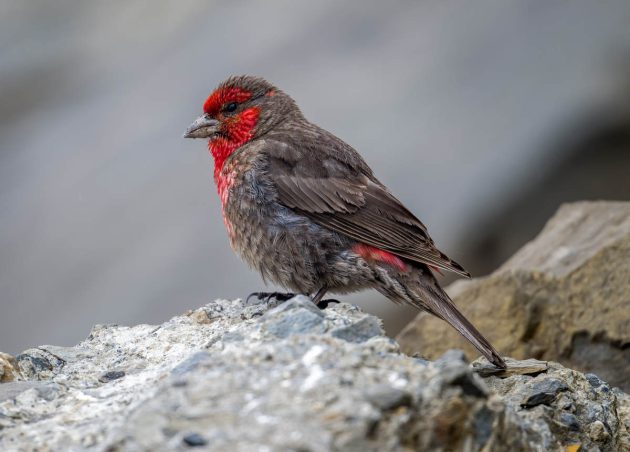
Indeed these photos were taken very close to the pass, at roughly 4500 meters – the highest rosefinch sighting on this trip.
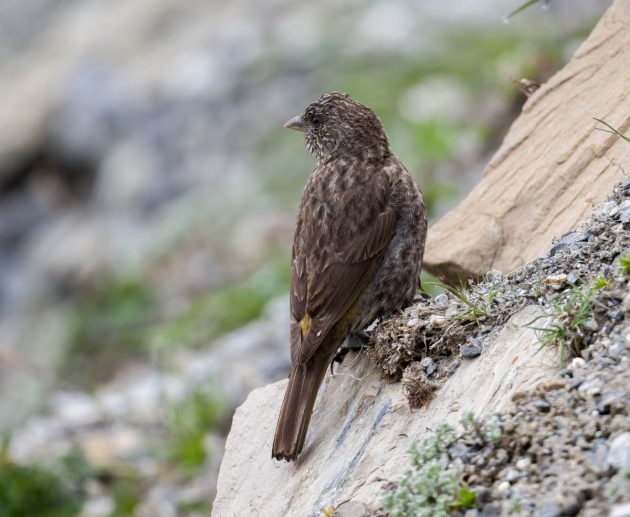
Being monogamous, this large rosefinch presumably frowns on the polygynandrous Alpine Accentors living at the same altitude. But fortunately, they make no efforts to restrict the lifestyle of the accentors, ban their books, or prevent them from educating their chicks about sex.
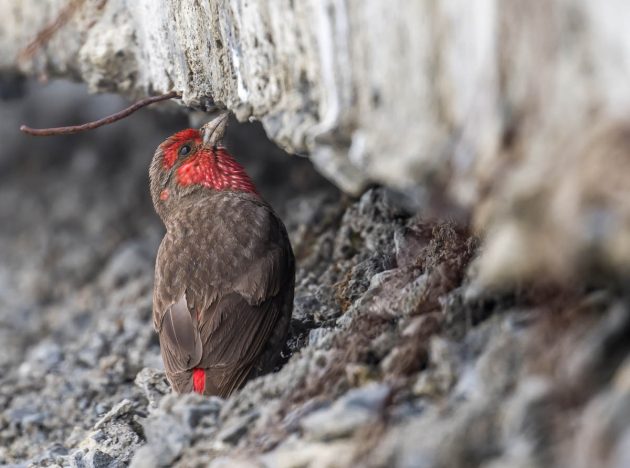
For a pronunciation exercise, maybe the following sentence is a good choice: The Latin species name of the Chinese Rubythroat is tschebaiewi, as the species was named by the Russian geographer Nikolay Przhevalsky in honor of the Cossack Pamfili Tschebaeiv who accompanied Przevalsky on his travels (note to sticklers: the two different spellings of Przevalsky are taken directly from the Wikipedia article).
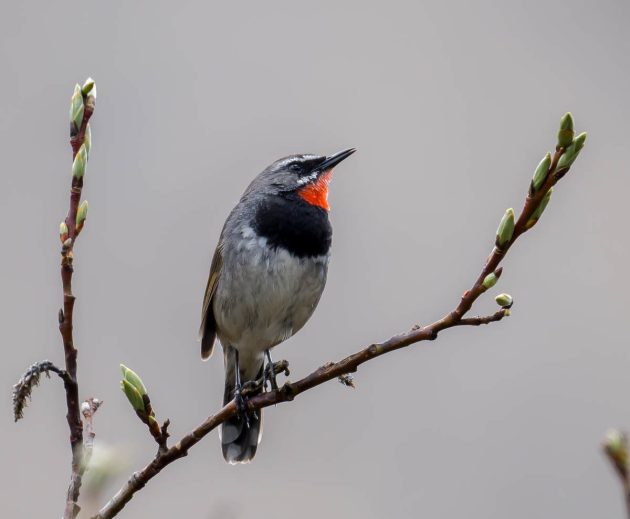
That is the Przevalsky/Przhevalsky who apparently despised the Chinese and openly called for Russia’s annexation of bits and pieces of China’s territory – not quite what Mr. Xi had in mind when he proclaimed a “no-limits friendship” between the two countries.
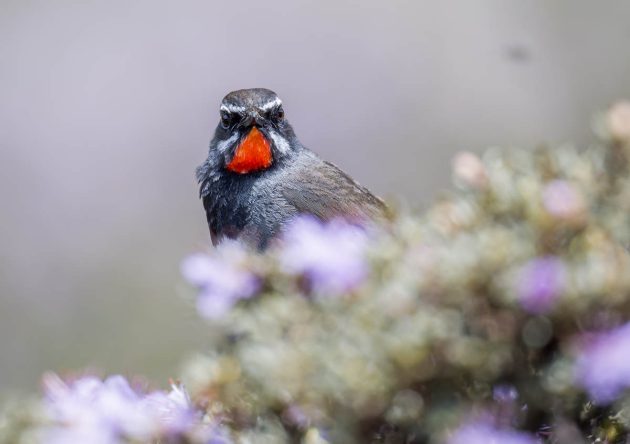
While the Chinese Rubythroat is related to both the Siberian Rubythroat and the Himalayan Rubythroat, the consensus seems to be that this is a separate species. One study specifically suggesting this ends with the rather ChatGPT-like sounding pompous sentence “Our study stresses the importance of applying an integrative taxonomy approach to fully unravel the true avian diversity in the Sino-Himalayan Mountains”. Then again, the ChatGPT training must have included millions of similarly-sounding scientific papers, so maybe the similarity is not surprising.
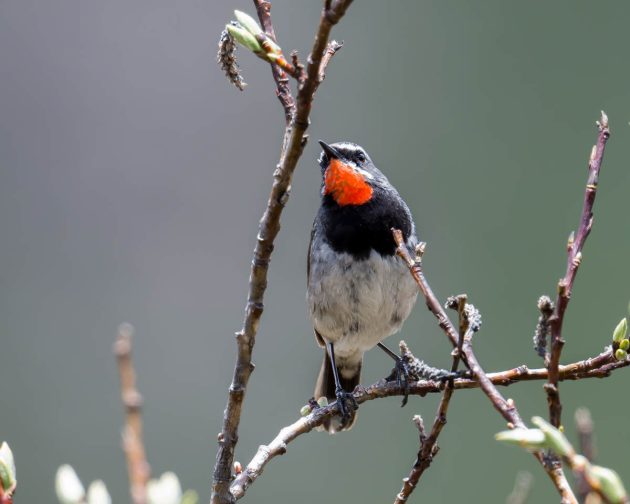
Also available as video here and here.
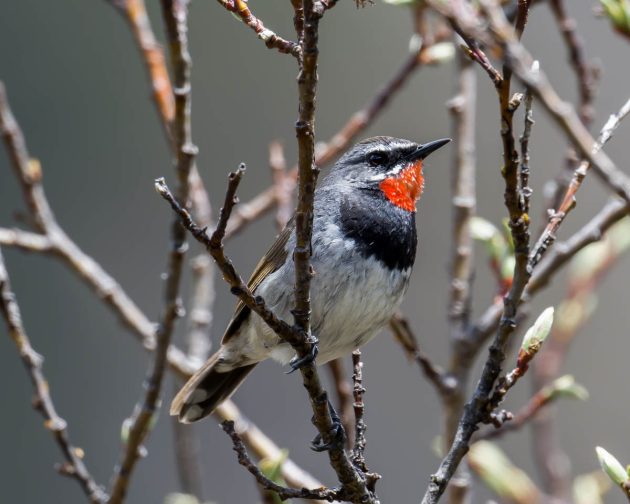
The White-browed Tit-warbler only gave me a few unsatisfactory shots of the female this time. So ungrateful. Therefore, no factoids about it in this post.
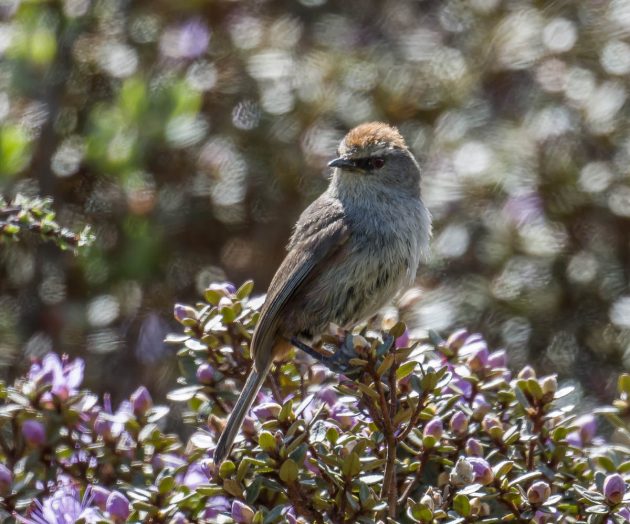
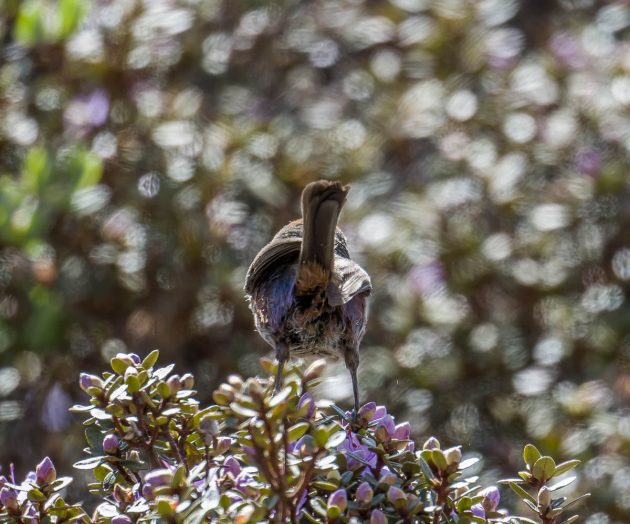
Unfortunately for the species, the name of the Plain Mountain Finch seems rather accurate. eBird agrees, calling it a “fittingly-named brown finch … [that is] drab brown overall”.
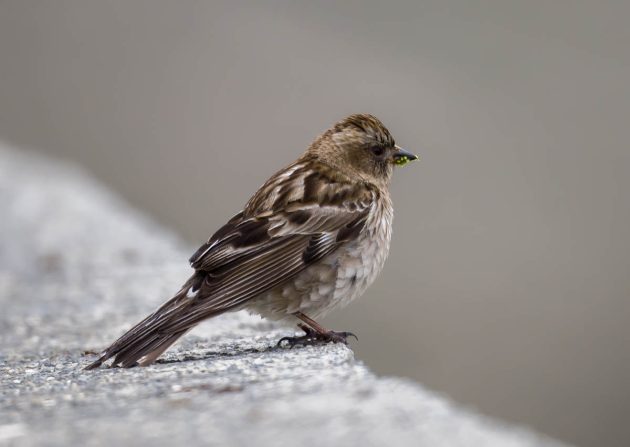
Accordingly, not much research seems to have been done on the species. Not glamorous enough, I guess.
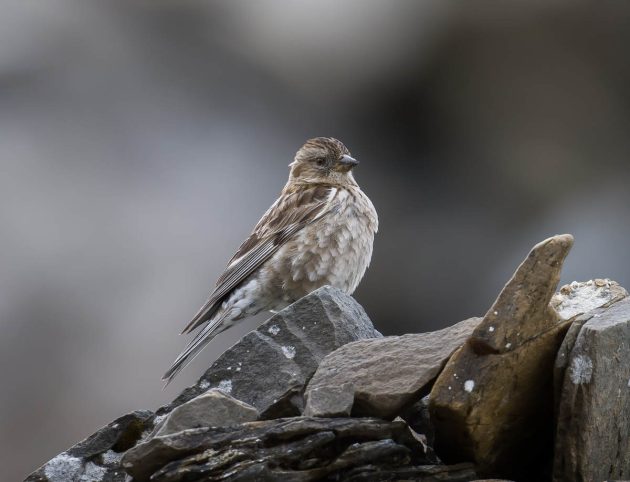
Surprisingly, according to the HBW, among the nest predators of the species are large snails.
The Alpine Leaf Warbler is among the slightly more attractive leaf warblers in China – which admittedly does not mean much.
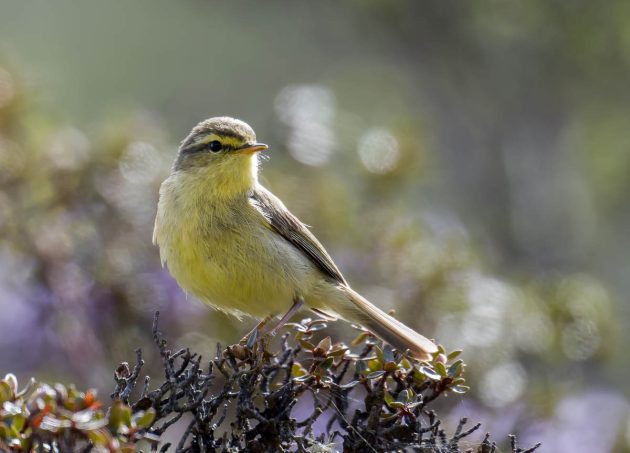
For an introduction to the full horror of leaf warbler identification, look here. It has such encouraging photo annotations as “P. affinis [Tickell’s Leaf Warbler] in Xizang. In practice inseparable from P. occisinensis [Alpine Leaf Warbler]”. Apparently, DNA analysis showed that the Alpine Leaf Warbler diverged from Tickell’s Leaf Warbler about four million years ago, but this time was not utilized to develop any useful visual differences – a bit of a waste of time if you ask me.
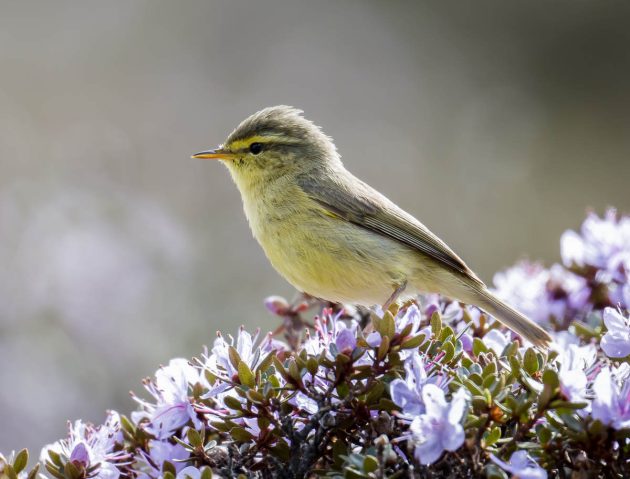
Actually, according to the HBW, these two species are still just one. On the other hand, it seems the HBW is often reluctant to add new species, instead murmuring about future changes that usually fail to happen. So, I guess it is best to first wait a few more million years and see how things develop before coming to any final conclusion.
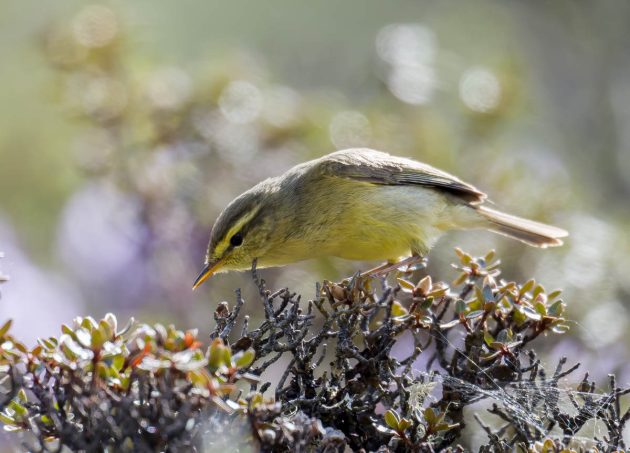





 New writers welcome – please contact us for details.
New writers welcome – please contact us for details.

















Great photographs despite the weather.
Kai….your trip report is brilliantly written. Thanks. I am still laughing. I’m an Irish guy teaching in Cambodia and hope to get to Sichuan sometime. The constant splitting in SE Asia is driving us crazy…with some leaf warblers needing frequency apps to ID them!
May I ask a question. Roughly how much would a 5 day trip with Alpine birding cost…starting in Chengdu….only one or two people?